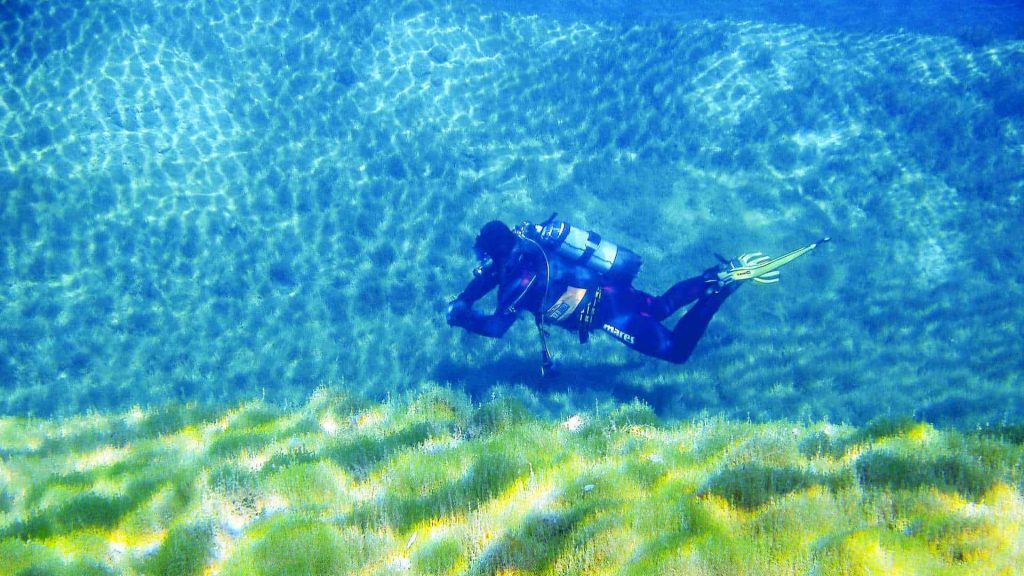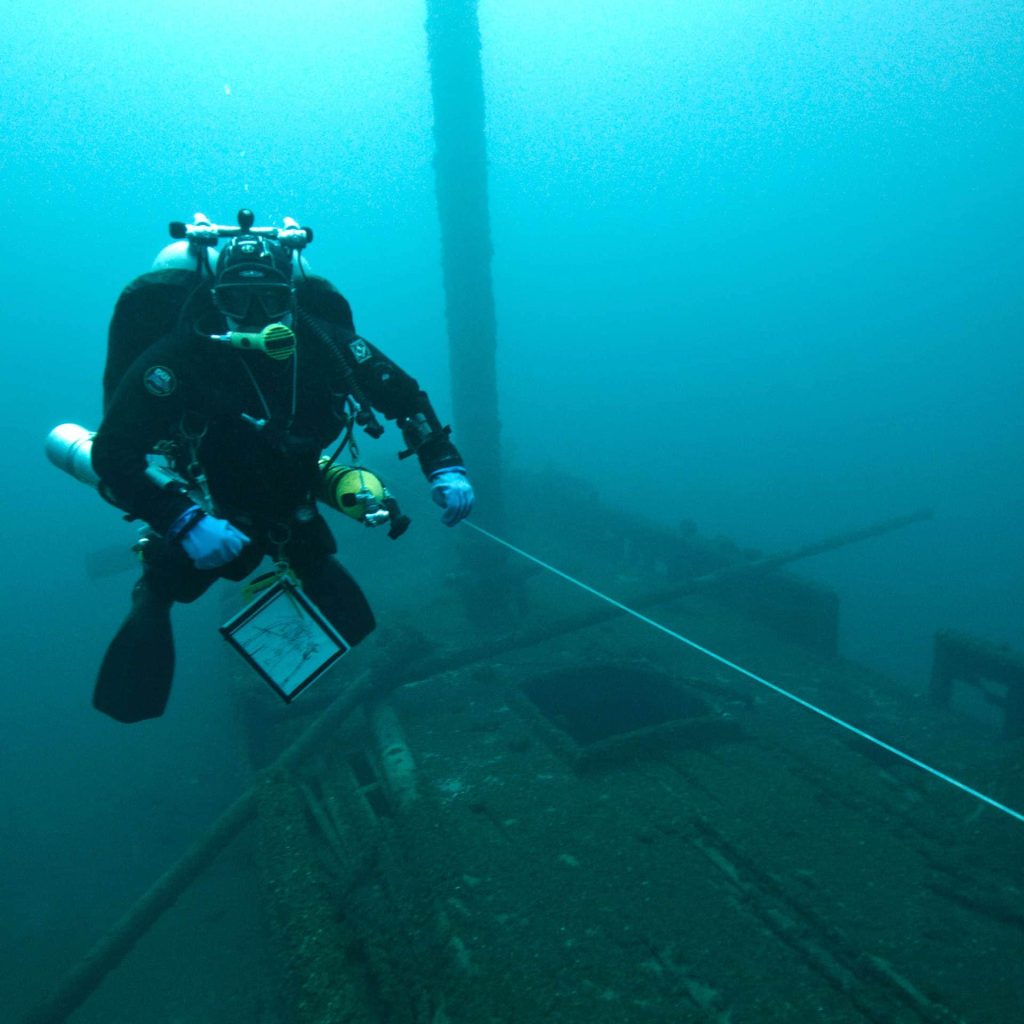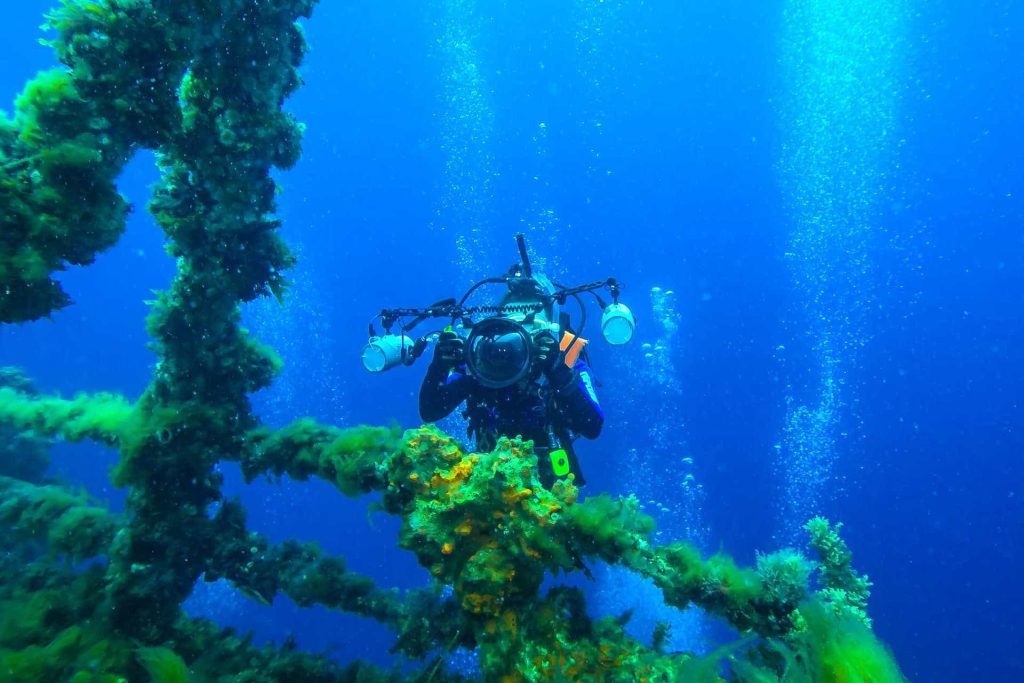Select your diving setup and our scuba diving weight calculator will automatically give you your optimal scuba diving weight.
Below, you also find some tips and tricks on how to optimize it even further.
Why should we optimize our scuba weight?
Ultimately, we are interested in our scuba diving weight for buoyancy reasons.
The more scuba gear we carry, the more we need to look out how it influences our buoyancy positively or negatively.
In general, the fewer extra weights we carry on a scuba dive, the better.
In case of too much weight, we create unnecessary drag underwater, use more air while diving and will have poor buoyancy and trim while diving.
If we carry too little weight, however, we will have a hard time descending and keeping our depth under control during our ascend.
What influences our weight as scuba divers?
Our scuba diving weight is made up of our entire scuba gear, our body weight, the buoyancy of the water, the scuba tank, the air in our tank and lungs, as well as any additional weight we carry. In order to scuba dive with ease, the sum of all these components should lead to neutral buoyancy.
Our scuba diving weight consists of many different parts and is not just the amount of lead weights we take underwater.
In order to achieve neutral buoyancy, our scuba diving weight needs to be optimized both at the surface and underwater at every point in time.
Experience
The more experienced divers become, the fewer weights they need to sink. Instead, they can effectively use breathing and movement to descend.
The scuba weight calculator factors in that experienced divers usually need fewer weights than beginners but of course, what counts as experienced is subjective.

Exposure Protection
Exposure protection is usually positively buoyant, meaning they decrease our scuba diving weight and thus increase the number of lead weights we need to carry to even this out.
This includes our wetsuit, boots, gloves, ice vests, and anything else we wear to stay warm underwater.
The thicker your exposure equipment, the more additional weights are required.
For drysuits, we need to not only even out the extra buoyancy but also add a little extra on top to ensure sufficient air inflation to increase thermal protection underwater. This means, adding an extra 1 or 2 kg (2-4lbs) on top of what’s required.
Our scuba diving weight calculator accounts for that by adding a little spare weight to the recommendation based on the average of your overall scuba diving weight.
BCD
A BCD is usually positively buoyant due to the air bladder inside. Check the product description to find the buoyancy rating by the manufacturer.
Backplates made of steel can be counted as 100% negative equal to their weight, while aluminum ones are pretty much neutral. Only carbon ones create positive buoyancy.
Other Scuba Gear
Other scuba gear like regulators, computers, etc. can be seen as almost neutral and usually it won’t make a big difference in terms of buoyancy which one you choose.
Scuba fins are usually neutral, except for full-rubber ones which add weight (and thus require fewer lead weights).

Scuba Tank
Scuba tanks influence our scuba weight and buoyancy in two different directions. Full scuba tanks are negatively buoyant, meaning they “add” weight and we don’t require extra lead pieces to compensate for them.
On the other hand, once our air is depleted, cylinders become positively buoyant and start to “pull” us up to the surface. Therefore, it’s important to account for this behavior and account for these buoyancy deviations when determining our scuba diving weight.
As you can see in the scuba diving weight calculator above, aluminum tanks require more additional weights to be evened out than steel ones.
Camera Equipment
Camera equipment can add a lot of scuba weight while also influencing our trim underwater.
Compact underwater cameras usually don’t require changes to our weights, however, once you add cables, flashes, lights, housing, and bigger lenses, you will need to see if you need to add/remove some.

How to test your perfect scuba diving weight calculations
Once you have entered all your info above, you should have a good idea of the number of extra scuba weights you should take on a dive.
Check our article on doing a scuba diving weight check to test your findings in the water.
Further reading
Now that you know your scuba diving weight for your specific use case, and got some pointers as to how to optimize it, here are some more suggested articles for you to check out:
Scuba Gear – All the scuba gear we have reviewed
Where to Dive – Our detailed travel guides for scuba divers
Liveaboards – The ultimate liveaboard diving guide
Diving Courses – Learn to dive with us or improve your skills
Make the most out of every dive
Join more than 21,300 readers on our email list for more tips & tricks!
We send out one newsletter per week, every Wednesday.